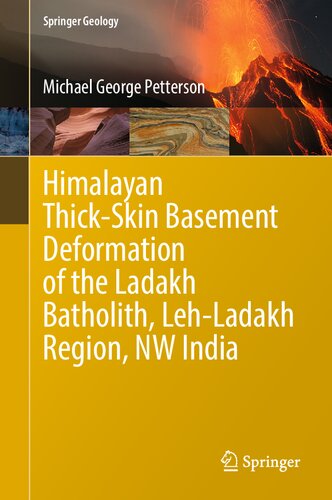

Most ebook files are in PDF format, so you can easily read them using various software such as Foxit Reader or directly on the Google Chrome browser.
Some ebook files are released by publishers in other formats such as .awz, .mobi, .epub, .fb2, etc. You may need to install specific software to read these formats on mobile/PC, such as Calibre.
Please read the tutorial at this link: https://ebookbell.com/faq
We offer FREE conversion to the popular formats you request; however, this may take some time. Therefore, right after payment, please email us, and we will try to provide the service as quickly as possible.
For some exceptional file formats or broken links (if any), please refrain from opening any disputes. Instead, email us first, and we will try to assist within a maximum of 6 hours.
EbookBell Team

4.4
102 reviewsThis book presents the first report and interpretation of the deformation, structural style, and geo-tectonic evolution of a 600km2 area of the Ladakh batholith, NW India, centred on the city of Leh, Ladakh. The Ladakh (and westerly Kohistan ) batholith comprises a large component of the Jurassic-Oligocene Kohistan-Ladakh Arc-Terrane (KLA), with magmatism spanning island arc, continental margin, and post-Himalayan collision tectonic environments. The KLA is bounded to the north by the Shyok-Northern Suture and to the south by the Indus Suture. The batholith illustrates basement thick-skin tectonic deformation and is divided/partitioned into a series of crustal blocks separated by lateral accommodation structures which allow independent movement in horizontal and vertical space. Thin skinned deformation within the adjacent sedimentary molasse Indus Suture Rocks produced large thrust stacks that predominantly moved towards the N-NE. Whilst deformation within cover sequences influences the basement structures, and helps break up the basement into crustal blocks, there is a clear distinction in deformation between the basement and cover sequences. Basement batholith deformation is more complex and heterogeneous, reflecting the variable transmission of tectonic stress within crystalline crust and the presence of a wide range of precursory inherited weaknesses and anisotropies. Models of time-space deformation are presented using data derived from field and extensive photograph / photo-mosaic image interpretation. The batholith was deformed during at least Palaeocene-Pliocene times at crustal depths that correspond to the ductile-brittle transition zone and shallower.